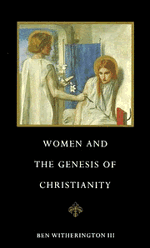1 - Women in Judaism
Published online by Cambridge University Press: 10 January 2011
Summary
No study of women in the New Testament can be undertaken without first looking at the larger historical context in which the events of New Testament history took place. This chapter describes the prevailing attitudes about women, their status and roles, in Israel before and during the New Testament era. We can mention only selected portions of the relevant data, but it appears that the information given is representative of the period.
When discussing first-century Palestinian Jewish women, the problem of dating the material immediately confronts us. Much of the rabbinic literature is of an unknown date, since it is not identified with a particular rabbi or school. Thus, we will rely primarily on information found in the Mishnah, a collection of oral traditions which explain and expand upon the law or legal material found in the Old Testament. These oral traditions were certainly in existence before the Mishnah was written down (codified) around A.D. 200. Information from other Jewish writings, such as the Talmuds and midrashes, are used when they seem to summarize attitudes that prevailed throughout the era of early Judaism.
Social life
There can be little doubt that the family was the exclusive sphere of influence for Jewish women in the first century A.D. This limiting of a woman's sphere of influence is partly attributable to Jewish marital customs of that day.
- Type
- Chapter
- Information
- Women and the Genesis of Christianity , pp. 3 - 9Publisher: Cambridge University PressPrint publication year: 1990



